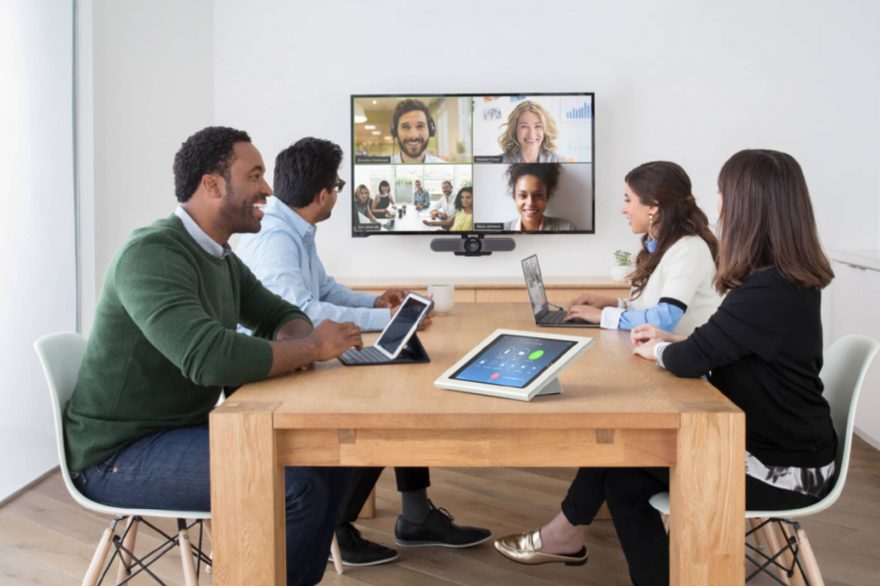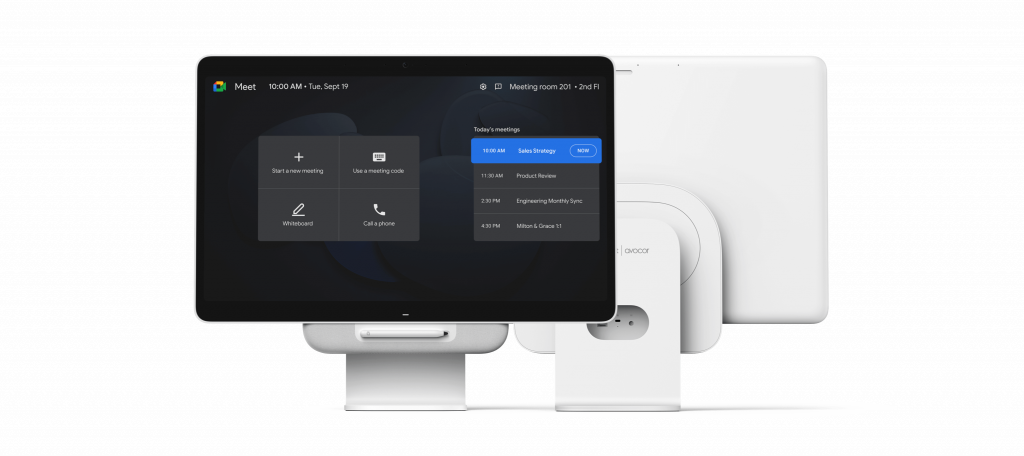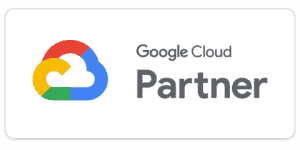The video conferencing systems for companies, are part of the new collaboration and interaction model that has been evolving in recent years. A digital transformation that includes organizing virtual meetings, interactive screens and live collaboration of all users.
The system that offers Google Meet Hardware It is one of the most complete in this sense, since it has the call interface and all the videoconferencing equipment that it offers together with large companies such as Logitech, Lenovo, Asus and even their own Chromebook. Hangouts Meet, Google's video conferencing system, offers a reliable video calling experience with whoever you want, from anywhere, with the best quality and super intuitive.
In this blog, we are going to talk about the different types of business collaboration and what our ideal video conferencing solution would be.
1. What are video conferencing systems?
The video conferencing systems They are communication tools that allow people meet and collaborate in real time through the Internet using audio and video devices. These systems typically include features like screen sharing, call recording, and text chat. They are widely used in business and educational environments to virtual meetings, training and team collaboration.
For the most part, the video conferencing solution includes an application or software to control and organize meetings, and the part of the hardware which includes the device (for example a Chromebox), control (remote control or touch panel, depending on the kit), camera (smart and adapted to the size of the room) and the most important thing would be the speakers and microphones (high quality audio and a smart microphone).
He Chromebox is a small and very affordable desktop solution that works with Chrome OS. It can be connected to any monitor, making it a powerful device, and integrates with the complete set of google apps. It is the best option to create a meeting room and be able to have multiple ports, a powerful computer and it is also small and light.
On the other hand, the video conferencing equipment which include high definition cameras, have a field of vision and design adaptable to the size of the room, thus allowing you to get the most out of it.
The speakers and microphone are key to organize quality meetingsIn this sense we must not skimp on a good image and sound. This range of products has noise cancellation, which is ideal for being heard correctly and also not interrupting others when they speak to us or are presenting with ambient sounds.
2. What video conferencing systems are there for companies?
There are different companies that offer video conferencing systems for companies, each of these systems has its own functions and features, so it is advisable to do your research and compare to find the best fit for each user's specific needs. Among the most notable and complete are:
 2.1 Google Meet Hardware
2.1 Google Meet Hardware
Google Meet hardware It is one of the best video conferencing systems, even combined with some plugins on the market it becomes a unique tool. It is very intuitive, secure and without interruptions since it works from Google cloud.
This tool includes greater comfort, flexibility and security in the professional area, since it adapts to the speed of your network so you can make high-quality video calls wherever you are.
With the service of Hangouts Meet, Google allows users to connect more easily, and with a quality much higher than what was customary, thus collaborative and remote work is much simpler, thus optimizing time and resources for a better experience in video calls.
 2.2 Zoom
2.2 Zoom
Is a video conferencing solution online that allows real-time meetings, group video calls, screen sharing, call recording, and text chat. It can be found in a free version and paid version which allows up to 1000 participants and no time limit, unlike the free version that allows video conferences of a maximum of 40 minutes.
 2.3 Microsoft Teams
2.3 Microsoft Teams
It is the Microsoft communication and collaboration platform which includes video conferencing, text chat, screen sharing, and cloud storage. It is integrated with the Microsoft suite, allowing you to collaborate online with all meeting participants in real time.
 2.4 Jitsi Meet
2.4 Jitsi Meet
This platform does not require the installation of an application on your computer, since it operates through a web browser. Jitsi Meet works as a video conferencing system open source that, like most options, allows real-time meetings, group video calls, screen sharing, call recording, and text chat. The number of participants in the meeting will depend on the performance of your computer and the speed of your Internet connection.
3. Video conferencing software
Now we have to talk about the Software, the application that we are going to use in all our meetings. In this case, we are going to focus on the software that offers Google, since it offers one of the most complete applications to make videoconferences in a completely free, secure and quite intuitive.
This video conferencing system for companies stands out for being easy access, because it integrates automatically with the Calendar App, and with just one click we can enter the call and talk; and sure, since it includes reliable video calls where the organizer can control who enters the meeting, how and when they do so. Also, if you have a Chrome device, Hangouts Meet It's already included, so you won't have to install anything.
And like most platforms, it allows share screen with all meeting participants, and record and broadcast video calls, and then share them with your team members and offer the better collaboration experience between teams.
4. The most outstanding professional video conferencing systems on the market
Between the video conferencing systems most outstanding on the market, we find great titans such as Google with Google Meet, Microsoft with Teams, Zoom, Skype, Discord, among others. Additionally, it is added to the list Avocor, which teamed up with Google to create two interactive whiteboards (one for personal desks or small rooms and another for large rooms), designed to improve collaboration in video conferences and adapting to new hybrid work models.
In general, companies are increasingly choosing to have a professional video conferencing system, as it provides the following advantages:
- Allows the real time collaboration between people who are in different places, which increases efficiency and productivity.
- Save time and money on the move as meetings can be held remotely.
- Improves communication and teamwork by allowing you to see and hear participants in real time.
- It allows share information and documents in real time, which facilitates decision making and collaborative work.
- Offers greater flexibility and comfort, since people can join meetings from anywhere with internet access.
- Provides a greater security since video conferences can be recorded and saved for future use.
5. How are video conferencing systems divided?
In the first instance we can differentiate two main categories of videoconferencing systems:
Dedicated video conferencing systems: These are specific video conferencing systems that are used for video conferencing only. These systems usually have specific hardware and software and are mainly used in business and educational environments.
Integrated video conferencing systems: These are video conferencing systems that integrate with other communication and collaboration tools, such as email, chat, and cloud storage. These systems are typically more flexible and accessible, and are used in both business and personal environments.
In addition, videoconferencing systems also can be divided into software and hardware, where software systems are those that run on a computer and accessed through a web browser, while hardware systems are those that include physical devices such as cameras and microphones.
They can also be divided into open source video conferencing systems and paid video conferencing systems, the former are free but may have fewer features, while the latter offer a greater number of features and services for a cost.





